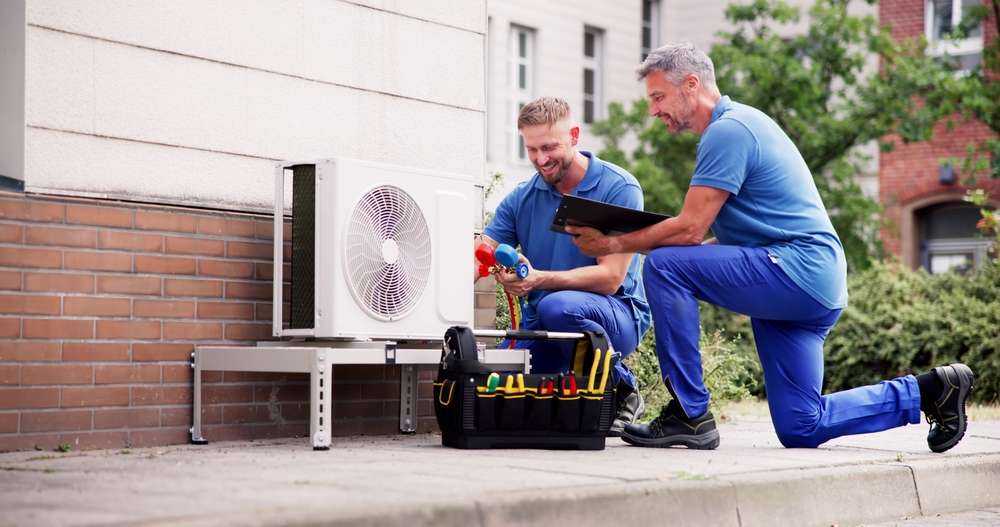HVAC Training: A Comprehensive Guide to Becoming a Certified Technician
The field of Heating, Ventilation, and Air Conditioning (HVAC) offers a promising career path for those interested in technical work and problem-solving. HVAC technicians play a crucial role in maintaining comfortable and energy-efficient environments in homes, offices, and industrial settings. This article will explore the various aspects of HVAC training, including certification requirements, classroom learning, and practical skills development.

Why is HVAC certification important?
Certification in the HVAC field is more than just a piece of paper; it’s a testament to a technician’s competence and dedication to their craft. Many states require HVAC technicians to be certified before they can work independently. Certification demonstrates that a technician has met specific industry standards and possesses the necessary skills to perform HVAC work safely and effectively. Moreover, certified technicians often enjoy better job prospects and higher earning potential, as employers and clients value the assurance that comes with professional certification.
What does HVAC classroom training entail?
Classroom training forms the foundation of HVAC education. In these structured learning environments, students delve into the theoretical aspects of HVAC systems. Typical classroom subjects include:
-
Fundamentals of electricity and electronics
-
Principles of heating and cooling
-
Refrigeration theory and practice
-
Building codes and safety regulations
-
Energy efficiency and sustainable practices
Classroom sessions often incorporate multimedia presentations, textbook study, and group discussions to ensure a comprehensive understanding of HVAC principles. Additionally, many programs utilize computer simulations to provide virtual hands-on experience before students work with actual equipment.
How important is hands-on training for HVAC technicians?
While classroom learning is essential, hands-on training is where HVAC students truly hone their skills. Practical training allows aspiring technicians to apply theoretical knowledge to real-world scenarios. This typically involves working with actual HVAC equipment in controlled workshop environments. Students learn to:
-
Install and maintain various HVAC systems
-
Diagnose and repair common issues
-
Use specialized tools and equipment
-
Read and interpret technical diagrams and schematics
-
Implement safety procedures and best practices
Many HVAC training programs also include apprenticeships or internships, providing students with invaluable on-the-job experience under the guidance of seasoned professionals.
What are the different types of HVAC certifications?
HVAC certifications come in various forms, each focusing on specific aspects of the trade. Some of the most recognized certifications include:
-
EPA Section 608 Certification: Required for handling refrigerants, this certification is available at four levels (Types I, II, III, and Universal).
-
NATE Certification: Offered by North American Technician Excellence, this certification is widely respected in the industry and covers various specializations.
-
HVAC Excellence: Provides both professional and master specialist certifications in different HVAC disciplines.
-
ICE Certification: The Industry Competency Exam certification is often required for entry-level positions.
-
ASHRAE Certification: Offered by the American Society of Heating, Refrigerating and Air-Conditioning Engineers, focusing on energy management and sustainability.
| Certification | Provider | Focus Area | Requirements |
|---|---|---|---|
| EPA Section 608 | Environmental Protection Agency | Refrigerant Handling | Exam-based, no experience required |
| NATE | North American Technician Excellence | Various HVAC Specializations | Exam-based, experience recommended |
| HVAC Excellence | ESCO Group | Professional and Master Level Skills | Exam-based, experience required for higher levels |
| ICE | Air Conditioning, Heating, and Refrigeration Institute | Entry-level Competency | Exam-based, typically for recent graduates |
| ASHRAE | American Society of Heating, Refrigerating and Air-Conditioning Engineers | Energy Management and Sustainability | Exam-based, experience and/or education required |
Prices, rates, or cost estimates mentioned in this article are based on the latest available information but may change over time. Independent research is advised before making financial decisions.
How long does it take to complete HVAC training?
The duration of HVAC training can vary depending on the program and level of certification sought. Generally, vocational programs can be completed in 6 months to 2 years, while associate degree programs typically take about 2 years. Apprenticeship programs, which combine on-the-job training with classroom instruction, usually last 3 to 5 years. It’s important to note that learning in the HVAC field is ongoing, with many technicians pursuing additional certifications and continuing education throughout their careers to stay current with evolving technologies and regulations.
HVAC training provides a solid foundation for a rewarding career in a growing industry. By combining classroom learning with hands-on experience and pursuing relevant certifications, aspiring HVAC technicians can position themselves for success in this essential field. As technology continues to advance and energy efficiency remains a top priority, well-trained HVAC professionals will remain in high demand, ensuring a bright future for those who invest in their education and skills development.






